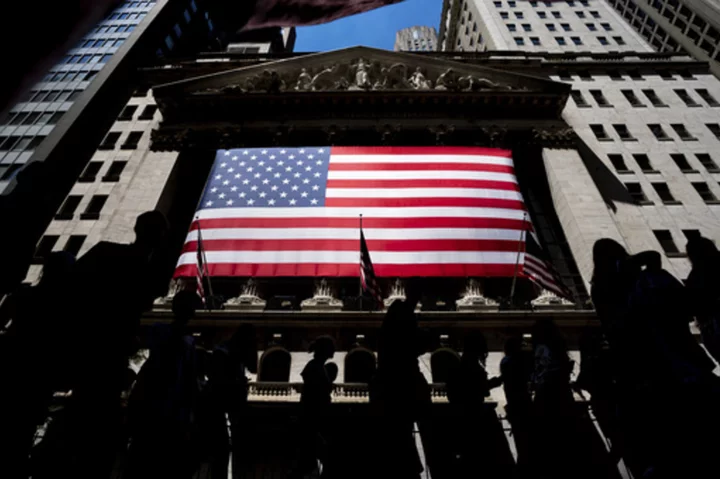Markets on Wall Street pointed lower early Friday as anxiety carried over from a day earlier when a handful of central banks around the world cranked interest rates higher in their fight against inflation.
Futures for the S&P 500 slipped 0.6% and futures for the Dow Jones Industrial Average lost 0.4%. Barring a turnaround, the benchmark S&P 500 is poised for its first losing week in the past six.
Federal Reserve Chair Jerome Powell this week has reiterated his belief that inflation is still too high and that further increases to rates may be necessary. Powell testified before a Senate committee Thursday, a day after appearing before a House of Representatives committee.
The Fed held interest rates steady at its last meeting after raising rates aggressively throughout 2022 and into 2023 to tame painfully high inflation. Inflation has cooled somewhat since last summer, but the Fed has signaled it may raise rates two more times this year as it tries to push inflation down to its stated goal of 2%.
High interest rates have already slowed manufacturing and other parts of the U.S. economy. They’ve also helped cause three high-profile failures in the U.S. banking system. The banking industry remains under pressure, even after the federal government acted quickly to provide support.
Central banks worldwide have been raising interest rates to make borrowing more costly and slow economic growth to stifle inflation. But the strategy risks going too far in stalling growth and dragging economies into a recession.
The U.S. government says the economy grew at a lackluster 1.3% annual rate from January through March, though a final estimate is coming next week.
That tepid growth has fueled anxiety over a potential recession and put pressure on oil prices.
After giving up $3.02 on Thursday, U.S. benchmark crude oil shed $1.05 to $68.46 per barrel early Friday in electronic trading on the New York Mercantile Exchange.
Brent crude, the international standard, lost 99 cents to $73.36 per barrel.
In Europe on Thursday, the Bank of England hiked its main interest rate by a bigger margin than expected to a 15-year high. It was the central bank’s 13th straight increase. Central banks in Norway, Switzerland and Turkey also raised borrowing rates.
In Asia, central banks have begun to keep interest rates steady, or in the case of Vietnam, cut them, as their economies have slowed.
Japan reported its inflation rate was higher than expected, adding to expectations the central bank might adjust its policies to reflect upward price pressures, which have pushed the dollar's value against the yen sharply higher. The Bank of Japan has kept its benchmark interest rate at minus 0.1% for a decade as policymakers keep credit cheap to encourage more investment and spending.
The core inflation rate, excluding volatile energy and food prices, was 3.2% in May, above the official 2% target for a 14th straight month, the government reported.
“We think there are signs of inflationary pressure building up on the supply side, but it is certainly not strong enough for the BOJ to bring about immediate tightening,” ING Economics said in a commentary.
The dollar was trading at 143.13 yen, up modestly from 143.10 yen and near its highest level since November. A weaker Japanese yen raises costs for Japanese businesses and consumers given the country's heavy reliance on imports.
In Asian trading, Tokyo’s Nikkei 225 lost 1.5% to 32,781.54 and the Hang Seng in Hong Kong fell 1.7% to 18,889.97. Shanghai was closed for a holiday.
In Seoul, the Kospi fell 0.9% to 2,570.10, while Australia’s S&P/ASX 200 gave up 1.3% to 7,099.20. Shares also fell in Mumbai and Bangkok.
In Europe at midday, Germany's DAX lost 1%, Paris, the CAC 40 in Paris slipped 0.4% and Britain's FTSE 100 shed 0.5%.
The euro was trading at $1.0890, down from $1.0960.
On Thursday, the S&P 500 rose 0.4%, even though the majority of stocks fell. A rebound for technology stocks helped to overshadow losses elsewhere in the market and keep the benchmark index afloat.
Gains for high-growth stocks also drove the Nasdaq composite to a market-leading gain of 1%, while Dow Jones Industrial Average fell less than 0.1%.
—-
Kurtenbach reported from Bangkok; Ott reported from Silver Spring, Maryland.

